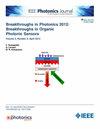稀疏光声层析成像的变换L1正则化
IF 2.4
4区 工程技术
Q3 ENGINEERING, ELECTRICAL & ELECTRONIC
引用次数: 0
摘要
光声层析成像(PAT)是一种先进的成像技术,它结合了光学和声学方法,以高空间分辨率可视化生物组织内的光吸收分布。从不完整和有噪声的实验数据中重建PAT图像是一个病态问题,需要正则化技术来确保有意义和稳定的解决方案。本研究提出了一种变换L1 (TL1)正则化模型来提高PAT图像的质量,并通过数值模拟和组织模体实验对其进行了评价。基于各种数值和组织幻象场景、10至30 dB高斯噪声水平和多参数配置,TL1方法在图像质量、计算效率和噪声鲁棒性方面始终优于lp -范数($0 \leq p \leq 2$)正则化方法。这一发现对改进稀疏采样PAT算法具有重要意义,也为未来生物医学应用的发展提供了有价值的见解。本文章由计算机程序翻译,如有差异,请以英文原文为准。
Transformed L1 Regularization for Sparse Photoacoustic Tomography
Photoacoustic Tomography (PAT) is an advanced imaging technology that combines optical and acoustic methods to visualize the distribution of light absorption within biological tissues with high spatial resolution. The reconstruction of PAT images from incomplete and noisy experimental data is an ill-posed problem that requires regularization techniques to ensure meaningful and stable solutions. In this study, a transform L1 (TL1) regularization model was proposed to improve the quality of PAT images, which was evaluated by numerical simulation and tissue phantom experiments. Based on various numerical and tissue phantom scenarios, Gaussian noise levels of 10 to 30 dB, and multiple parameter configurations, the TL1 method consistently demonstrates shows consistent advantages over the Lp-norm ($0 \leq p \leq 2$
求助全文
通过发布文献求助,成功后即可免费获取论文全文。
去求助
来源期刊

IEEE Photonics Journal
ENGINEERING, ELECTRICAL & ELECTRONIC-OPTICS
CiteScore
4.50
自引率
8.30%
发文量
489
审稿时长
1.4 months
期刊介绍:
Breakthroughs in the generation of light and in its control and utilization have given rise to the field of Photonics, a rapidly expanding area of science and technology with major technological and economic impact. Photonics integrates quantum electronics and optics to accelerate progress in the generation of novel photon sources and in their utilization in emerging applications at the micro and nano scales spanning from the far-infrared/THz to the x-ray region of the electromagnetic spectrum. IEEE Photonics Journal is an online-only journal dedicated to the rapid disclosure of top-quality peer-reviewed research at the forefront of all areas of photonics. Contributions addressing issues ranging from fundamental understanding to emerging technologies and applications are within the scope of the Journal. The Journal includes topics in: Photon sources from far infrared to X-rays, Photonics materials and engineered photonic structures, Integrated optics and optoelectronic, Ultrafast, attosecond, high field and short wavelength photonics, Biophotonics, including DNA photonics, Nanophotonics, Magnetophotonics, Fundamentals of light propagation and interaction; nonlinear effects, Optical data storage, Fiber optics and optical communications devices, systems, and technologies, Micro Opto Electro Mechanical Systems (MOEMS), Microwave photonics, Optical Sensors.
 求助内容:
求助内容: 应助结果提醒方式:
应助结果提醒方式:


